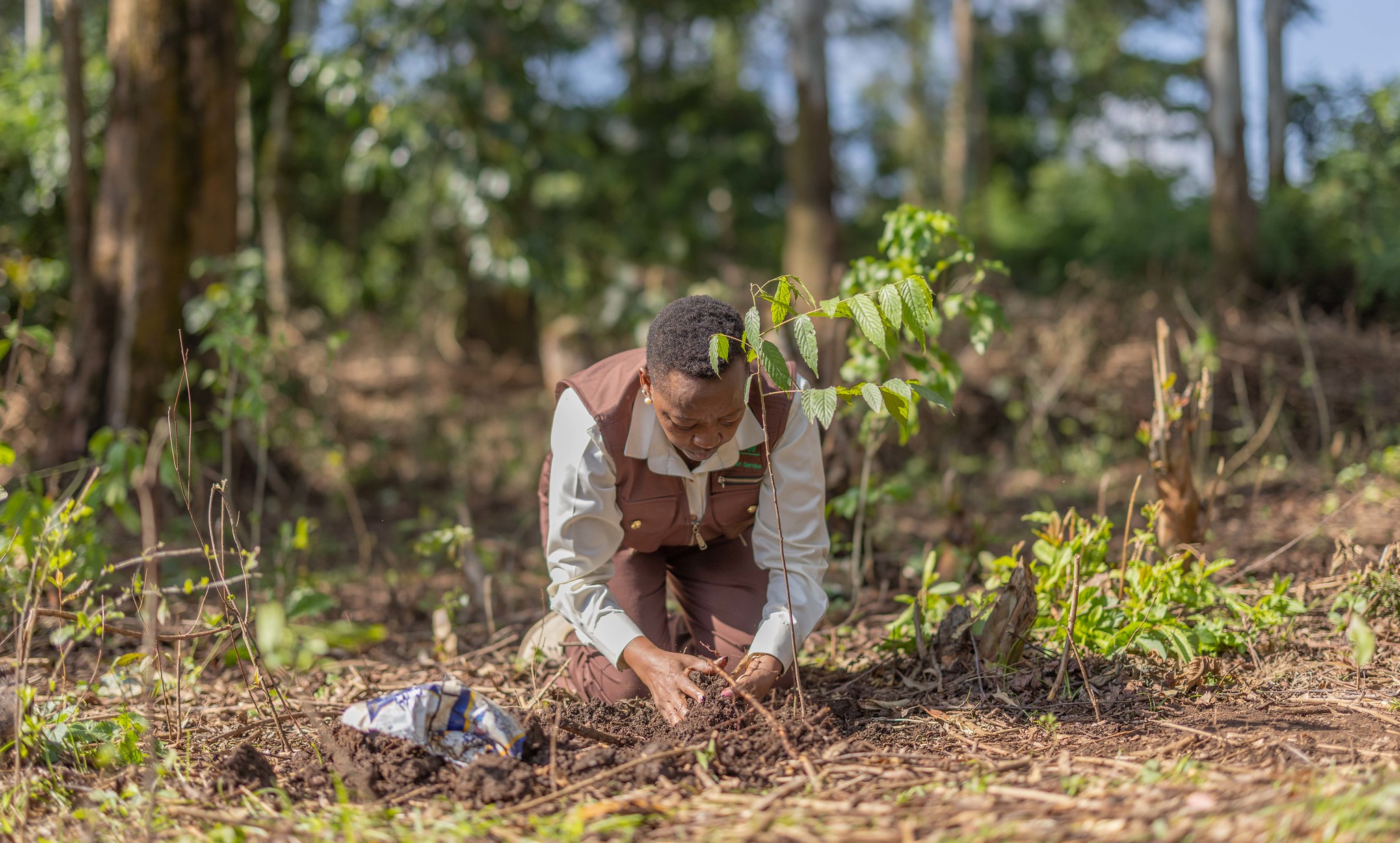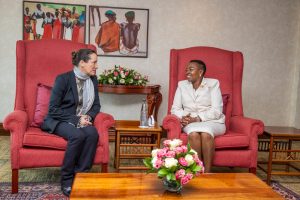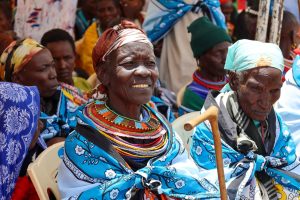Forests and trees outside forests (TOF) play a significant role in varied ways and play a key role in the Kenyan economy providing a substantial source of employment and economic growth as well as contributing to climate risk reduction and resilience strategies.
Forests play a key role in broader watershed protection, protection of coastlines, and climate regulation through carbon storage.
However, forests and tree-based benefits to people and the planet are declining due to deforestation and forest degradation across Kenya. The end result for communities, who are heavily dependent on forests and tree resources, is increased vulnerability and rise in poverty levels.
Therefore, there is a need to reverse forest degradation and deforestation in line with global, continental and national goals on landscape and ecosystem restoration.
Kenya has committed to restoring 5.1 million hectares by 2030. In view of this, the country developed the Forest and Landscape Restoration Implementation Plan 2023-2027 targeting to restore 3.5 million hectares by 2027.
In 2022, the President of the Republic of Kenya, H.E. Dr. William S. Ruto scaled up the initial commitment of restoring 5.1 million hectares to 10.6 million hectares through the National Landscape and Ecosystem Restoration Strategy. This will translate to increasing Kenya’s tree cover from the current 12.13% to at least 30% by 2032 by growing 15 billion trees.
This is expected to contribute to Kenya’s efforts towards climate change mitigation and improving resilience of people and ecosystems to provide required goods and services in order to achieve the Sustainable Development Goals (SDGs).
It is with this understanding that the Office of the First Lady of the Republic of Kenya has made a commitment to grow 500 million trees in support of the Special Presidential Directive on the National Landscape and Ecosystem Restoration Programme that aims to achieve at least 30% tree cover by 2032.
The Office will work with various stakeholders and espouse different strategies to achieve this ambitious commitment. These include; forest adoption; promoting establishment of women and youth-led tree nurseries; promoting tree growing through agroforestry for improved livelihoods; growing of forests and fruit trees within institutions and schools; and catalysing access to finance to accelerate locally-led land restoration efforts and climate action.
This Strategy and Implementation Plan is hinged on three programmatic areas where various strategies and initiatives are derived for implementation within a 10-year period.
Programmatic Area 1: Mama na Misitu
This programmatic area addresses forest conservation, wise use of forest resources and restoration of degraded forests in partnership with the Ministry of Environment, Climate Change and Forestry through Kenya Forest Service-led “forest adoption framework” and strengthening participatory forest management and good forest governance models.
Programmatic Area 2: Mama na Miti Mashinani
This programmatic area aims to support agroforestry practices and specifically focuses on promoting the cultivation of trees and fruit trees on farmlands and in institutions, schools, arboreta, and public spaces. This will promote the social, cultural, and economic value of tree growing. The overall impact of this programmatic area is to improve household food security, incomes, diversification of livelihoods, and enhance environmental education.
Programmatic Area 3: Mama na Mabadiliko ya Tabia Nchi
This programmatic area addresses land and ecosystem restoration as a strategy for mitigating and adapting to climate change. This will be achieved through capacity building, outreach, innovative climate financing and addressing data gaps on impacts of climate change to biophysical and social systems to inform policy and decision making.
This will also focus on convening strategic engagements and alliances to advance climate change actions locally, regionally and internationally.
The programmatic area will also promote tailor made climate smart interventions targeting women, youth and learners.
PRIORITY AREAS OF FOCUS
The Office of the First Lady seeks to compliment, leverage and support the priorities of the National Government, the Kenya Kwanza Plan and the successful implementation of the National Landscape and Ecosystem Restoration Plan. With regard to its guiding roles to convene, connect, collaborate, catalyse and celebrate, the Office seeks to contribute to the 15 billion trees growing strategy by growing 500 million trees by 2032.
Her Excellency, the First Lady of Kenya is keen to empower a women, youth and learner-led action in forest and landscape restoration, with specific focus on the following amongst others
Priority Area 1: Forest Adoption
The first priority area will focus on Kenya Forest Service’s “Adopt a Forest Framework” which is a program aimed at engaging individuals, communities, and organisations in the conservation and management of forests in Kenya. The initiative encourages stakeholders to take an active role in protecting and preserving forests by “adopting” a specific forest area.
Through the Adopt a Forest Initiative, The First Lady will work with spouses of Governors, Senators and Parliamentarians; and elected Women Representatives to adopt degraded forests in their respective counties, constituencies and communities.
Priority Area 2: School based programs
The second priority area focuses on implementing greening programs in schools. These programs will be anchored under the First Lady’s Mazingira Awards which aims to integrate environmental education and sustainable practices in schools. Learners are educated about the importance of environmental conservation and climate action and engage in hands-on activities such as setting up fruit gardens dubbed Mama Fruit Gardens, composting, and waste management initiatives. These programs contribute to building a generation of environmentally conscious and climate ready citizens who understand the importance of sustainable practices and can actively contribute to a greener future for Kenya.
This priority area will also focus on advocating for a climate friendly school meals programme and implementation in all forty-seven counties of Kenya, targeting early years and middle school education; sustain the Government of Kenya’s drive to achieve universal school feeding of 10 million learners by 2030.
Priority Area 3: Green Spaces and Arboreta
The third priority area focuses on the creation and development of green spaces and arboreta. This involves the establishment of public parks, gardens, and arboreta that provide recreational spaces for the community while promoting biodiversity and ecosystem services.
Priority Area 4: Green Tree Commodity Initiative
This priority area on Green Tree Commodity Initiative will promote an ambitious transformative green economy initiative through tree commodities in Kenya. The initiative will catalyse the economic contributions from nine commodities (coffee, avocado, macadamia, mango, wood, cashew, orange, gum arabic and bamboo). This would come with additional jobs, food and nutritional security, enhanced biodiversity, climate resilience, climate mitigation and carbon revenue benefits. The initiative will contribute to Kenya’s bottom-up economic model and the special presidential directive.
Priority Area 5: Carbon Project
The fifth priority area will focus on designing and implementing bankable carbon projects. These projects may include agroforestry, afforestation, reforestation, renewable energy projects, and carbon offset programs.
Stakeholders Roles in this Strategy
This strategy has placed stakeholders centrally in its implementation. Some of the key stakeholders targeted include the Government of Kenya through the Ministry of Environment, Climate Change and Forestry, National Government Constituency Development Fund, County Governments, Private Sector, Learning Institutions, Community Based Organisations, Faith Based Organisations, National and International Non-governmental Organisations, Development Partners, Commercial banks, media and communities among others.
Already Existing Partnerships
Some of the existing partnerships and commitment to drive the attainment of this target include; Commitment from Lukenya University to grow 10 million trees; Astrazeneca Forest Initiative in Kenya that seeks to grow 6 million trees western Kenya – Elgeyo Marakwet, West Pokot, Uasin Gishu, Trans Nzoia, Baringo, and Nakuru.
5 million tree campaign that is a partnership with the office of the First Lady and The Nature Conservancy. The partnership aims to support TNC’s water fund programs in four of Kenya’s major water towers. The Eldoret-Iten, water fund was the first of the initiatives to restore the water catchment areas in the country and especially conserve the Cherangany, Elgeyo Hills forests, and the Northern Mau – critical water towers that supply water to the cities of Eldoret, Iten and surrounding communities. Other projects that the partnership will support include the restoration of the Upper Tana, the Coast (Jumuiya ya Pwani), and the Nandi/River Yala catchments to plant 5 million trees over three to five years.




